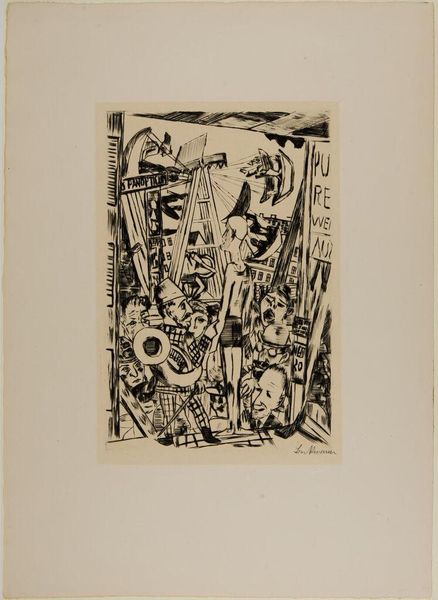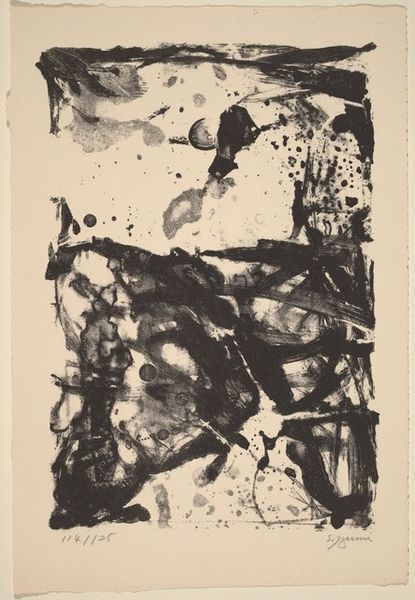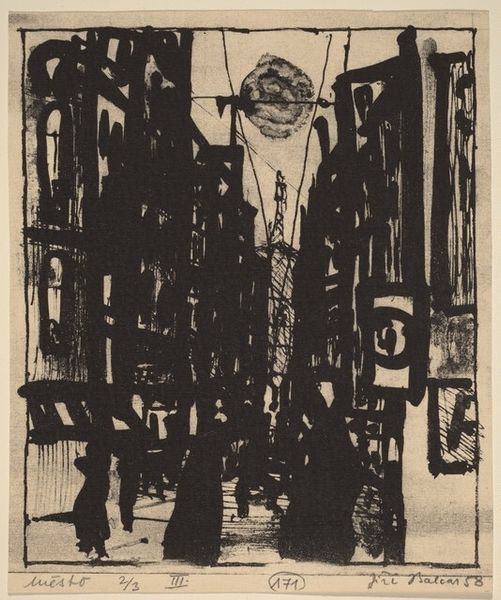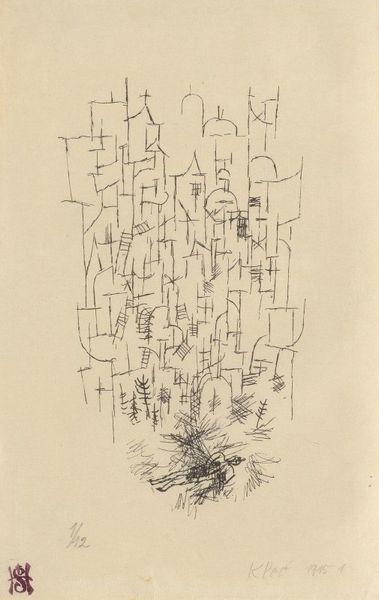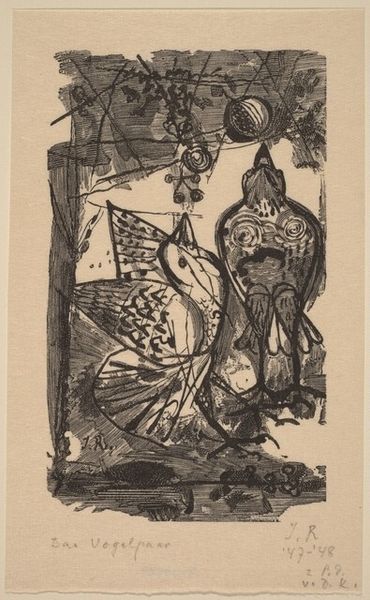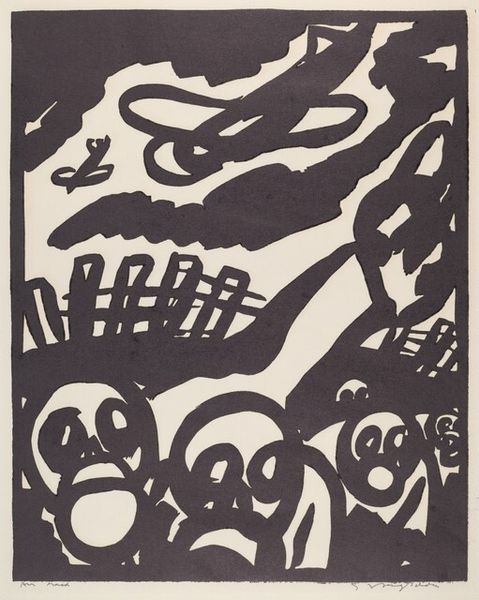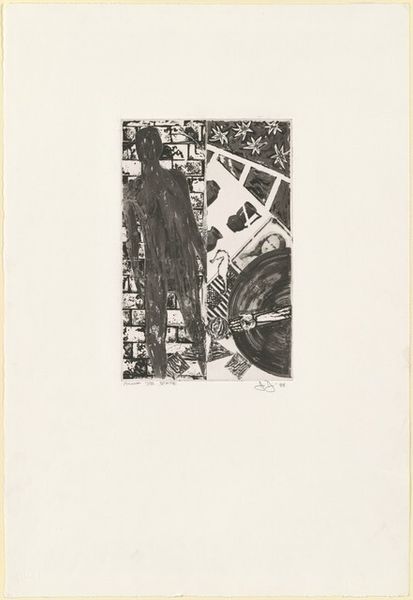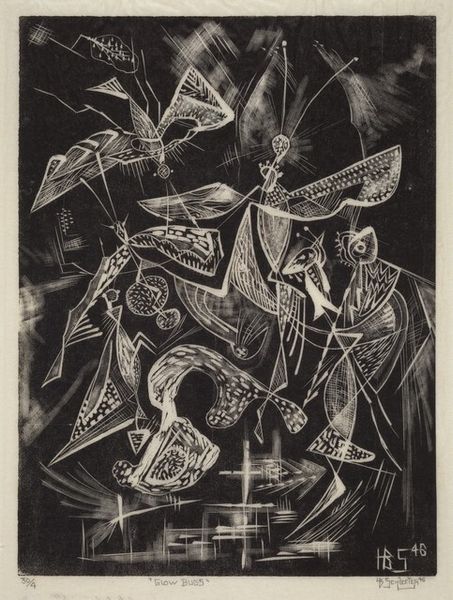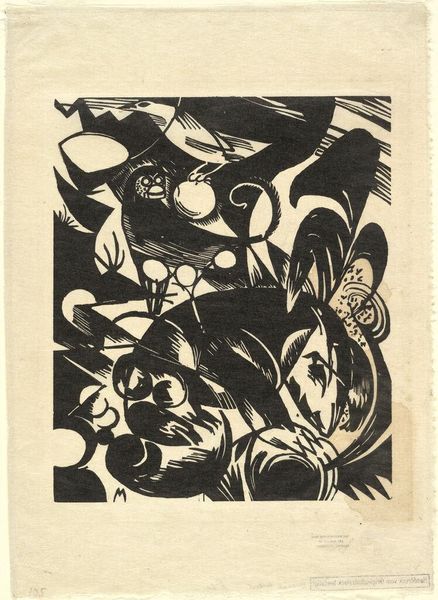
drawing, ink, graphite
#
drawing
#
ink drawing
#
pen sketch
#
german-expressionism
#
abstract
#
ink line art
#
ink
#
geometric
#
expressionism
#
line
#
graphite
Copyright: Public Domain: Artvee
Editor: Here we have Johannes Molzahn's "Fall," created in 1919 using ink and graphite. The energy is so chaotic! What strikes me most is this sense of downward movement created with all the strong diagonal lines. How do you interpret this work? Curator: For me, “Fall” feels like a descent, perhaps a mental one, expressed through this explosion of abstract forms. The jagged, angular shapes – almost weapon-like, don't you think? – create a sense of unease. Consider the time it was made: 1919, right after the trauma of World War One. Could this be a visual metaphor for the crumbling of pre-war certainties, the free-fall into a disorienting new reality? Editor: That's a compelling reading! The "weapons" and overall downward pull you describe definitely create that unsettling feeling. I had interpreted the geometric forms as perhaps being architectural or mechanical, in keeping with the industrialization of that time. Curator: Indeed! But the German Expressionists were known to violently reject modernity in favour of pre-modern, spiritual aesthetics. Maybe it depicts a catastrophic event, not as an outer occurrence but an internal landscape, with cogs and buildings shattering. Is there a hint of humour, perhaps dark humour, in this almost cartoonish rendering? What do you think? Editor: I see what you mean. The somewhat haphazard rendering could be seen as dark humour... I think understanding more about Expressionism and that time really deepens the experience with this drawing. Curator: Exactly! We impose ourselves on it, and it imposes itself on us, no? Art at its finest asks the deepest questions back at us!
Comments
No comments
Be the first to comment and join the conversation on the ultimate creative platform.

